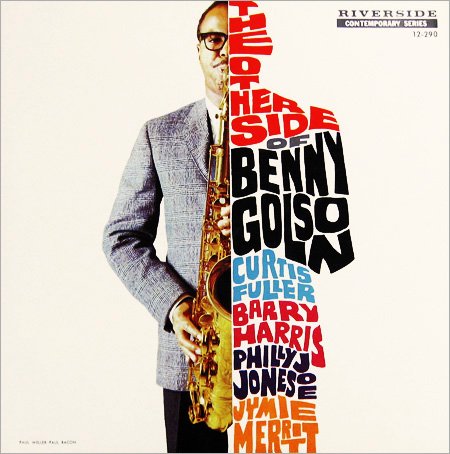PROJECT SPOTLIGHT: TYPOGRAPHY PORTRAITS
“we are each other’s harvest:
we are each other’s business:
we are each other’s magnitude and bond.”
“As a classroom community, our capacity to generate excitement is deeply affected by our interest in one another, in hearing one another’s voices, in recognizing one another’s presence.”
If you follow Wide Angle Youth Media’s blog, you might have seen our recent spotlight on Middle School students in our Baltimore Speaks Out (BSO) program. While reading the personal stories of Peymaan, Natalie and Sue, you might have reflected on your own formative middle school experiences.
I recall my own middle school years as a significantly impactful time of forming identity and belonging. As a 6th grader, my family relocated from Pittsburgh, Pennsylvania to Birmingham, Alabama. As many middle schoolers do, I navigated this time with a heightened awareness of ways I was different, and ways I could try to fit in. I also held the opinions of my peers in high regard, fearful of doing anything embarrassing. Personal identity is complex, and exploring your unseen inner life requires vulnerability and safety - two qualities that can feel hard to come by genuinely in many middle school classrooms.
This school year, we started a special project with our middle school partner organization, Lillie May Carroll Jackson. The project is to create a self-identity driven typography portrait. This project combines digital photography and lighting techniques with personal writing, inviting students with a wide range of previous design experiences to join in on the artmaking. It calls students in to consider how they identify themselves in different places, with different people. It also makes space for students to identify words or phrases that do not reflect their identity, and to include that in their piece. This word-driven portraiture seeks to explore identity from multiple perspectives, with an emphasis on intersectional identities. One exercise used to generate a unique word bank, is to imagine ourselves as seen by our friends, our families, our society, and ourselves. It is in the category of ‘society’ that students often call out the generalizations and pressures they feel:
To comply with norms, rather than to criticize them
To conform to stereotypes: Gender, Race, Class, Age, Sexual Orientation, rather than question them
To ‘pass’ or seek personal and peer acceptance through masking
To compare rather than celebrate differences, exclusion rather than inclusion
To foreclose on an identity, rather than safely ‘try on’ a multitude of identities
A key text that influenced this project is One Book Baltimore’s 2021 selection, We Speak for Ourselves by D. Watkins. In WSfO, Watkins writes about his experiences with Black identity in Baltimore. We Speak for Ourselves provides students with stories that ask: Who speaks for us? What words have we accepted as truth about ourselves, and why? What story am I told about who I have to be, or what I am ‘supposed’ to do?
Lesson Plans
Creative typography is a popular graphic design trend, but it is not new! Examples of creative type can be seen in film titles and poster art, album art, book cover design, and appear frequently in advertising, packaging, and logo design. A portrait created by graphic designer Ludovic Cordelières has served as a central inspiration for this project as well as other designs shown below:
"Slavocracy" by Ludovic Cordelières
"James Brown" by Sergio Moctezuma
"The Other Side of Benny Golson" cover art by Paul Bacon
"Creative Portrait" by Edwin Tan Photography
Handout/Guide for Word Bank
Day 1: Identity Word Bank, Portrait Photography Intro, and Studio Portraits
While students begin creating their word bank - a process that encourages conversation and brainstorming, other students (1 or 2 at a time) begin working with Ms. Natalie or myself to craft their portrait in the photo studio. This individualized time is focused on the student’s artistic direction. We ask students open-ended questions, and follow their lead. Students adjust their lighting, their poses, and direct the photographer on angles and composition. Each photo is reviewed with the student to ensure their personal vision comes through.
Day 2: Canva.com Tutorial, Text and Image editing
Using Canva.com, students learn how to edit their photograph, removing all saturation and adjusting the contrast and brightness for maximum contrast without losing detail. They also learn how to add text to their photograph, which can then be warped to correspond to their image. This is an exciting time to watch students intuitively play with design principles. It can also be a lot of new information, and students are encouraged to support each other in navigating the site.
Middle school student Coreon’s final portrait project.
Day 3: Adding type and effects, Presentation
Students continue to combine their word bank with self-portrait photography to create a composite image. Once completed, students present their project to the class. At the culmination of our project, all student portraits will be included in a printed photo book for the school.
MEET THE AUTHOR
Beth Holladay is a Baltimore-based artist and teacher with over a decade of experience with community arts programs, art education, and freelance photography. After receiving her MA in Art Education from the University of Louisville, she led a public high school art program by initiating community partnerships, diversifying the curriculum, and creating avenues for student work to be exhibited in local galleries. She uses her experience and expertise in graphic design and photography to engage students and community members in art projects focused on inclusion and social justice. She maintains an independent art practice of hand-cut collage.










